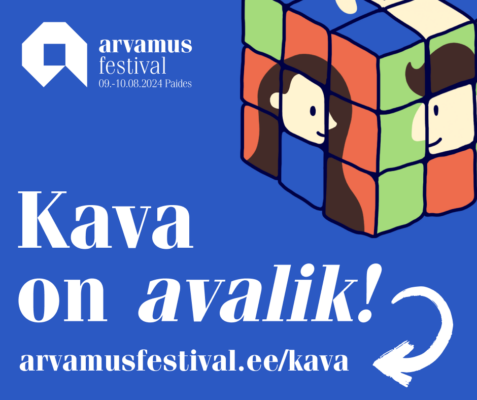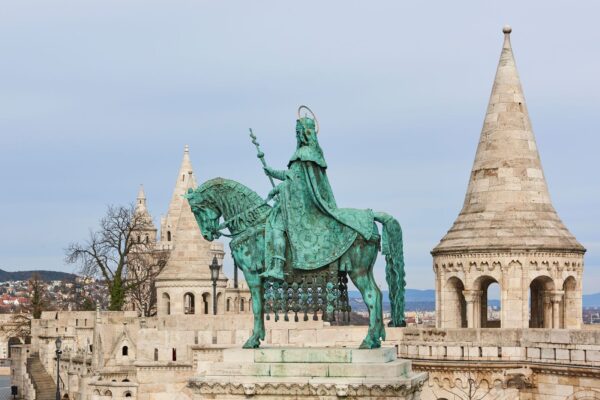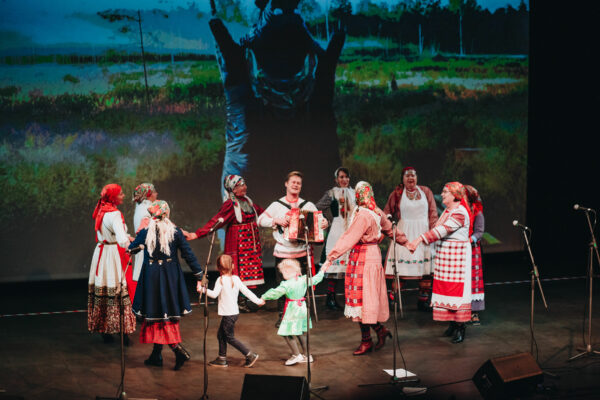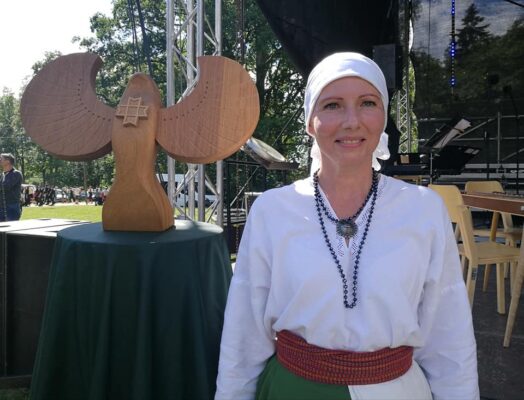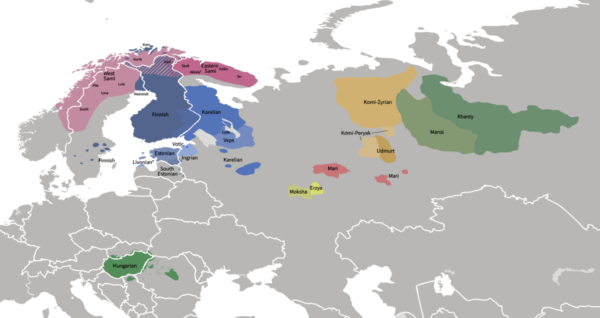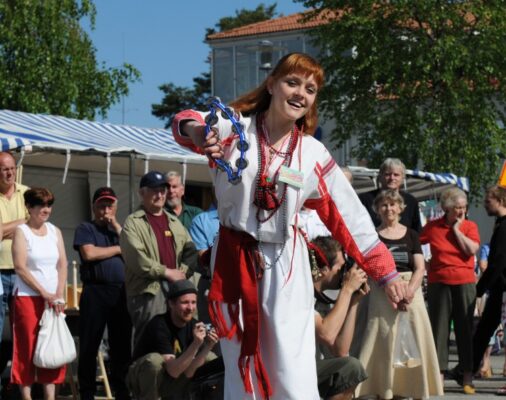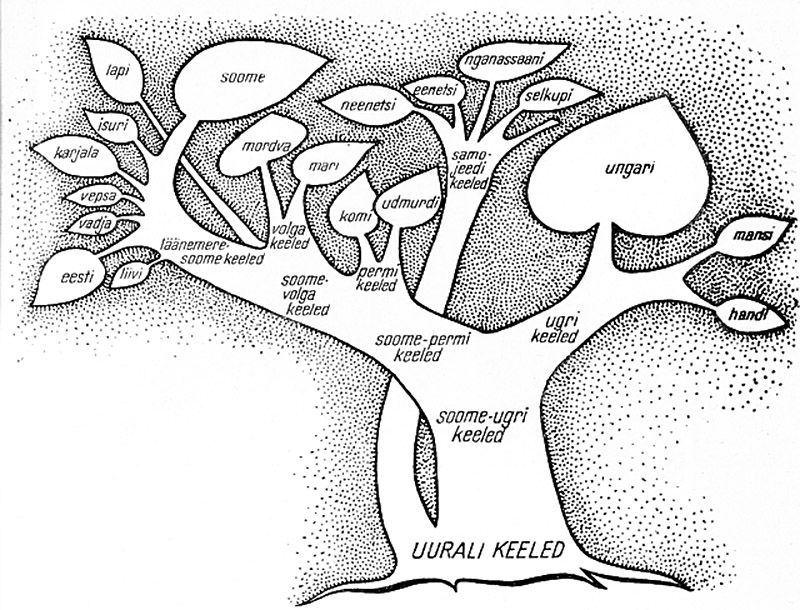
Uralic language family
According to recent studies, the peoples speaking Finno-Ugric languages have inhabited Europe for about ten millennia. It seems that before the “Great Migration”, mainly Finno-Ugric languages were spoken in Eastern and Central Europe. Linguistic kindredness of Finno-Ugric peoples was discovered at the end of the 18th century by the Hungarian scholar János Sajnovics (1733-1785). These observations of the Hungarian theologian have led to the development of an entire branch of linguistics – Finno-Ugric studies – which in turn has extended into Uralic studies (linguistics of Uralic languages) which also comprises Samoyed languages. Sometimes the term “Finno-Ugric” refers to all Uralic peoples, including Samoyedic peoples.
Today, almost 25 million people belong to the Uralic (i.e., Finno-Ugric and Samoyed) language family, inhabiting an area that extends from Norway in the West and the Ob River region in the East, to the lower reaches of the Danube in the South. Thus, various Finno-Ugric enclaves can be found in this massive domain that is surrounded by peoples speaking Germanic, Slavic, Romance and Turkic languages.
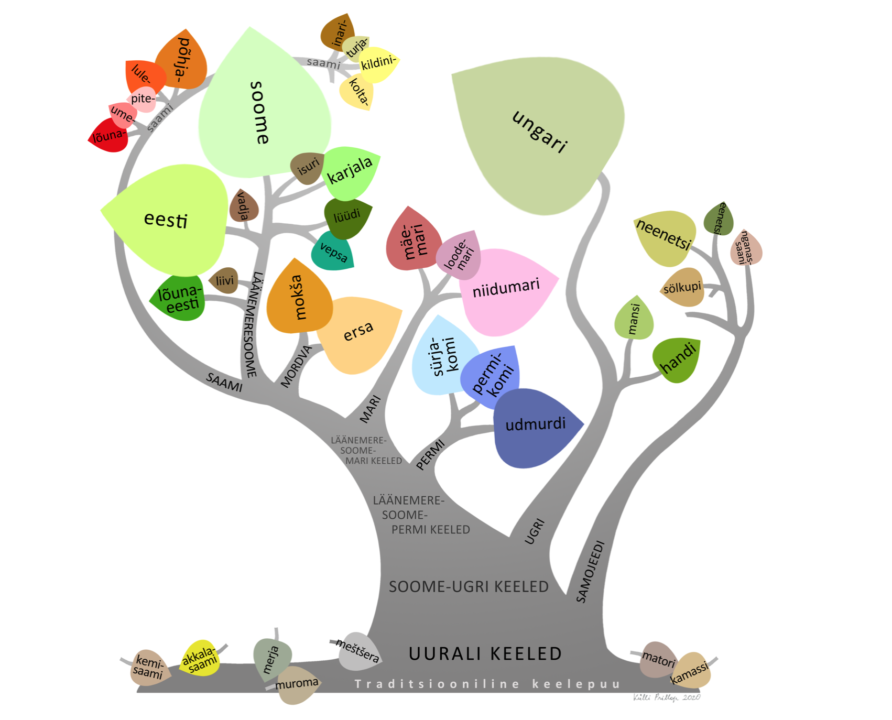
Statistics and Political Status
Speakers of the Finno-Ugric languages represent about 24 different peoples whose political fates and status vary greatly. Despite the fact that they are the indigenous inhabitants of the territories where they live, most of them have never had their own nation-state. Only about 15 million speakers of Hungarian, 5 million of Finnish, and 1 million of Estonian have their own independent states. The Saami, on the other hand, live in the territories of four different countries. The Western Saami (in Norway, Sweden, and Finland) have been successful in not only preserving, but even developing their culture and ethnic identity. In Norway, the Finnish-speaking Kvens are recognised as a national minority. However, the Hungarian-speaking Csángos in Romania do not have any official recognition. At the same time Livonians have been constitutionally recognised as an indigenous people in Latvia.
The remaining Finno-Ugric peoples live in Russia, constituting 17 out of 24 different Finno-Ugric peoples. Furthermore, there are 3 peoples who live both in and outside the territory of Russia.
According to the Russian census data of 2002, the number of Finno-Ugrians has decreased dramatically since 1989: from 3.3 million to 2.7 million. The largest Finno-Ugric peoples have their own so-called republics (Karelians, Mordvins, Maris and Udmurts) or autonomous regions (Khanty, Mansis, and Nenets), in all of which they are minorities. Vepsians have a so-called national commune in Karelia, whereas Ingrian Finns, Izhorians, and Selkups (Ostyak Samoyeds) have no territorial autonomy of any kind.
There are some Finno-Ugric peoples in Russia: Votians, Izhorians, and Enets (Yenisey Samoyeds), in whose case we can no longer speak of the threat of assimilation. Rather, they have already been assimilated by the prevailing Russian culture and language, to the extent that they no longer exist as distinct ethnic groups.
The number of people actually speaking Finno-Ugric languages in Russia has decreased to less than two million, and this number is declining constantly. There are many factors, which hamper the growth of the Finno-Ugric peoples’ self-awareness as a people. The main ones seem to be urbanisation, modern demographic shifts and migratory trends, mixed marriages, and the attitudes of the surrounding population, which prevent Finno-Ugric peoples from developing a satisfactory way of life that is appropriate for their ethnicity. Another very important factor is the continuous downgrading of native language education. Finno-Ugric peoples of Russia have had very limited opportunities, if at all, to preserve their languages and cultures, though the situation, of course, differs from region to region.
Recently, new threats to the preservation of the languages and cultures of Finno-Ugric peoples in Russia have emerged. One of these relates to changes in the Language Act of the Russian Federation, which now stipulates that all official languages in Russia must be written with the use of only the Cyrillic alphabet. The Act excludes the possibility that any language which uses the Latin alphabet, can be an official language. Another threat stems from envisaged changes to the borders of ethnic territorial regions, which will probably increase the social pressure for the assimilation of indigenous Finno-Ugric peoples. For instance, the formerly Komi Permyak Autonomous Region (the Komi-Permyaks’ territory) has been merged with the larger Perm Oblast into Perm Krai.
The Finno-Ugric Mentality and the Role of Language
Despite the various similarities of Finno-Ugric languages, they are not mutually intelligible. Nevertheless, belonging to the same language family is the most significant feature unifying the Finno-Ugric peoples. The kinship of Finno-Ugric languages can be detected especially in their analogous constructions. This distinctive construction of their languages has influenced the Finno-Ugric peoples’ frame of mind, as well as the way they perceive the world around them. This facilitates mutual understanding between the Finno-Ugric peoples. At the same time, the specifically boreal attitude of Finno-Ugric peoples enriches world culture via its unique way of thinking. Unlike Indo-Europeans, individuals thinking in Finno-Ugric languages would, for instance, tend to consider nature not as an object, but rather as a partner for coping with life. Nor are the cultures of the majority of Finno-Ugric peoples aggressive – throughout history, Finno-Ugrians have tried to accommodate themselves to ever new neighbours, until they have had to migrate in order to maintain their own identity.
Differing racial, religious, and cultural characteristics
Western Finno-Ugrians belong to the Caucasian race. However, the closest relatives – the Hungarians, Khantys (Ostyaks), Mansis (Voguls) in Siberia, as well as their neighbours the Samoyeds – represent the Uralic race, having both European and Mongolian physical characteristics.
The culture of Volga-Finnic, Permic and the small-numbered Baltic-Finnic peoples is strictly agrarian, since due to several historical, political, and cultural reasons, they have had no opportunity to develop their own urban culture. Throughout the centuries, the cultures of Khanty, Mansis, and Samoyedic peoples – which are based on hunting, fishing and reindeer husbandry – has adapted itself to life in extreme Siberian conditions. However, these peoples’ cultural heritage most vulnerable to the negative influences of modern industrial culture.
As for organized religion, most Finno-Ugrians are Christians of various confessions. Estonians, Finns, and Western Saami are mainly Lutherans, whereas Hungarians are mostly Catholics, although some are Calvinists or Lutherans. Finno-Ugrians living in the European part of Russia are mostly Orthodox, but the Udmurt and Mari people have preserved their ancient animistic religions. Also, the Finno-Ugrians of Siberia, as well as Samoyedic peoples, are to this day shamanists.
The strength of the Uralic family of kindred peoples lies in its diversity: our similar thinking and values make it easy to understand each other, while our differences enable us to enrich each other’s cultures.
